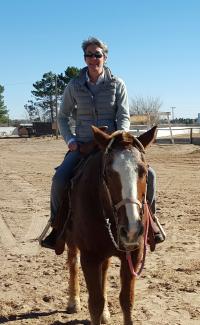January 7, 2025 8:17 PM EST
The year was 1989. I was a new grad working in a private practice, small animal medicine and surgery rotating internship. We had rotations working with different specialists (internal medicine, surgery, cardiology, ophthalmology, etc.), lots of overnight emergency shifts, and plenty of primary outpatient care responsibilities, too.
I was merely 3 or 4 months into my internship and on a rotation that included a mix of seeing outpatient appointments and working alongside specialists at the flagship referral hospital. One day I was presented with a 12-14 year old female, indoor cat whose owner complained of a lump on the cat’s neck. She lived in a multi-cat household and the owner was suspicious of a cat bite abscess (as she’d experienced these with her cats in the past). This cat was pretty docile but the owner claimed there was a feisty male in the household who often beat up on the others.
Sure enough, this patient had a cat bite abscess (the size of a small apricot) on the dorsal midline over the caudal cervical spine. This was my first cat bite abscess. The owner knew exactly what would be recommended (based on past experiences) and consented to leave her cat for treatment. Back then, the standard of care for treating a cat bite abscess was to lance the abscess, establish drainage (with a penrose drain), prescribe a course of oral antibiotics (amoxicillin or amoxi/clavulanate), and owner care at home (flush the drain and apply warm, moist compresses).
And so, that’s what was done. The owner was advised to return in 5-7 days for a recheck and possible drain removal. The owner adhered to all recommendations and the drain was removed at the follow up visit. Unfortunately, that is not the end of the story. The cat died. That cat bite abscess recurred two more times and that third recurrence prompted surgical exploration and debridement (by a board certified surgeon). A drug resistant, L-form bacteria was cultured from the tissue and she was subsequently euthanized due to the extensive necrotizing process (subcutaneously) along her entire dorsum and down her body walls.
Imagine what it felt like to be a new grad dealing with your first “simple” case of a cat bite abscess and the patient dies. Now, she had a really bad disease process (which was not my fault), but I don’t mind admitting that this case and the outcome rattled my self-confidence. I’m not sure that my mentors handled that event as well as they might have, either. If hospital leadership / senior doctors had been more proactive in debriefing about the case and outcome, I might have been left with a different feeling and mindset about all that transpired (as would other staff who assisted me in the care of that patient).
Adverse medical events and medical mistakes that result in "near misses" or patient death are an unfortunate reality in the challenging world of veterinary medicine. Examples of these types of events include: communication failures, diagnostic errors, medication errors, surgical complications, anesthesia-related errors or complications, device or equipment failures, and the ever-dreaded patient identification error. Sometimes, there are just bad outcomes and we wonder, is there something I could / should have done differently?
Any of the aforementioned examples can carry profound consequences for the patient, their owner / family, as well as the veterinary care team. In the case of mistakes, they may go unreported (if the patient doesn’t die) but adverse events can ripple through hospital teams and affect morale, trust, and confidence.
Addressing medical errors not only requires a commitment to improving systems and practices but also fostering a culture of transparency, accountability, and support. Understanding the multifaceted repercussions of these events is essential to cultivating safer healthcare environments and resilient care teams.
In addition to my personal experiences (e.g. the cat bite abscess example), I’ve seen adverse medical events impact others. In fact, I worked as a Medical Director of a multi-specialty referral and emergency practice for 9 years and suspect that I did not support some of those individuals as well as I could have at the time. I / we didn’t have an awareness or insights into the impacts of these types of situations nor systems in place for best addressing them.
I’m super excited to be teaming up with Dr. Lori Kogan – a Professor of Clinical Sciences at Colorado State University and Chair of the Human-Animal Interaction section of the American Psychological Association – to present a workshop that we’ve titled “Debriefing Adverse Medical Events.” Throughout 2025 we’ll be presenting this 2 hour virtual presentation and interactive workshop (via ZOOM), for small groups of veterinary professionals, to create an understanding of the potential impacts of medical mistakes and adverse medical events on individuals and how hospital teams can create a safe environment to support all involved. I hope that my colleagues will embrace this unique opportunity and join us (this is pending approval by AAVSB RACE for 2 hrs of CE credit)!
Remaining 2025 workshop dates*:
- Thursday, November 6, 2025 (1p PT / 4p ET)
Read More & Register
*A minimum of 15 participants is required for this workshop (maximum of 30 participants per session).

 Login via Facebook?
Login via Facebook?